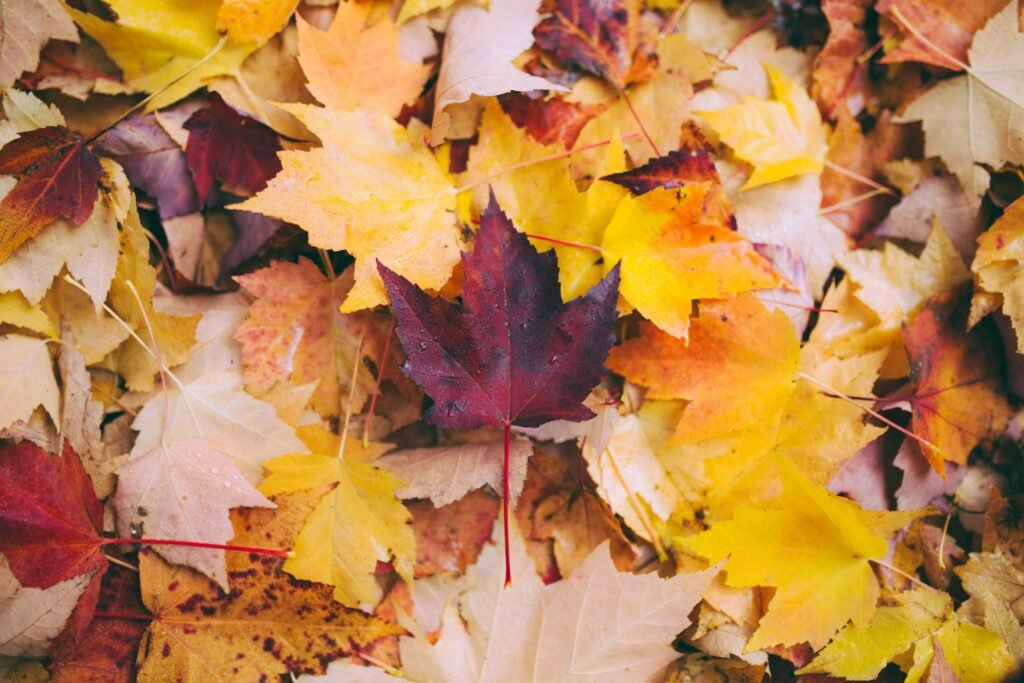Have you ever come across a mushroom and wondered about its classification? Mushrooms are fascinating organisms that belong to the fungi kingdom. With their unique characteristics and diverse forms, mushrooms have captured the curiosity of people worldwide. In this article, we will explore the classification of mushrooms, delving into the different categories and groups that these remarkable fungi belong to. So, if you’re ready to unlock the secrets behind the classification of mushrooms, join us on this enlightening journey.

Kingdom
Fungi
Mushrooms belong to the kingdom Fungi. The kingdom Fungi is a diverse group of organisms that includes yeasts, molds, and fungi. The members of this kingdom do not have chlorophyll and they obtain their nutrients through the absorption of organic matter. Fungi play a vital role in the ecosystem by decomposing dead organic material and recycling vital nutrients back into the environment.
Phylum
Basidiomycota
The phylum Basidiomycota is one of the largest phyla in the kingdom Fungi, and it includes many familiar mushroom species. Basidiomycota fungi are characterized by their club-shaped reproductive structures called basidia, which produce and disperse spores. Mushrooms belonging to this phylum often have a cap and a stem, with gills underneath the cap that produce the spores.
Ascomycota
Ascomycota is another important phylum within the kingdom Fungi. Members of this phylum include truffles, morels, and many other types of fungi. Ascomycota fungi are characterized by their reproductive structures called asci, which contain spores within. These spores are usually produced in sac-like structures called asci and are released for reproduction.
Zygomycota
The phylum Zygomycota includes fungi that are commonly found in soil or decaying organic matter. These fungi reproduce by forming a durable resting structure called a zygosporangium. Members of this phylum play significant roles in nutrient cycling and decomposition in various ecosystems.
Deuteromycota
Deuteromycota, also known as fungi imperfecti, is a phylum that includes fungi with no known sexual reproductive stage. These fungi reproduce asexually through various methods such as spore production or fragmentation. Deuteromycota contains many medically important fungi, some of which are responsible for causing diseases in both humans and animals.
Class
Agaricomycetes
The class Agaricomycetes belongs to the phylum Basidiomycota and includes many familiar and common mushroom species. Mushrooms in this class are characterized by their cap and stem structure and the presence of gills underneath the cap. Agaricomycetes fungi are widely distributed and play a significant role in decomposition and nutrient cycling in forests and other ecosystems.
Leotiomycetes
Leotiomycetes is a class within the phylum Ascomycota. It comprises a diverse group of fungi, including many plant pathogens. Some species belonging to this class form fruiting bodies with cup-shaped structures and produce spores in asci. Leotiomycetes fungi have various ecological roles, ranging from decomposers to symbionts.
Eurotiomycetes
The class Eurotiomycetes includes various fungi, including many molds and some pathogenic species. Eurotiomycetes fungi are known for their ability to grow in diverse habitats such as soil, plants, and even indoor environments. Some well-known examples of Eurotiomycetes include Aspergillus and Penicillium species.
Zygomycetes
Zygomycetes is a class in the phylum Zygomycota. Members of this class are characterized by their rapid growth and ability to reproduce through both sexual and asexual means. Zygomycetes fungi are commonly found in soil and decaying organic matter and play important roles in decomposition.
Order
Agaricales
The order Agaricales is a diverse group within the class Agaricomycetes and includes many common mushroom species. Agaricales fungi are known for their cap and stem structure, with gills underneath the cap that produce spores. This order includes popular edible mushrooms such as the button mushroom (Agaricus bisporus) and various species of the genus Psilocybe.
Boletales
The order Boletales includes fungi that are characterized by their pore-bearing structures instead of gills. The spores of these fungi are produced in small tubes or pores on the underside of the cap. Boletales fungi are often associated with mycorrhizal relationships with trees and include well-known edible species such as the boletus mushroom (Boletus edulis).
Russulales
Russulales is another order within the class Agaricomycetes. Fungi belonging to this order have a cap and stem structure, and their spores are produced on gills underneath the cap. Russulales fungi are found in a wide range of ecosystems and include various edible and non-edible species.
Polyporales
The order Polyporales includes fungi that are characterized by their woody or leathery texture and the absence of gills. Instead of gills, Polyporales fungi have tiny pores on the underside of their cap where the spores are produced. This order includes many species that are important decomposers, playing a crucial role in breaking down wood and other plant materials.

Family
Agaricaceae
Agaricaceae is a family of fungi that belongs to the order Agaricales. This family includes many familiar and common mushroom species, such as the button mushroom (Agaricus bisporus) and the field mushroom (Agaricus campestris). Agaricaceae fungi have a cap and stem structure with gills underneath the cap. Some species within this family are edible and highly sought after for culinary purposes.
Boletaceae
Boletaceae is a family of fungi that belongs to the order Boletales. Fungi in this family are characterized by their cap and stem structure, but instead of gills, they have a sponge-like layer of pores on the underside of the cap. Boletaceae includes various species of boletes, some of which are highly prized for their culinary value.
Amanitaceae
Amanitaceae is a family of fungi that includes the well-known genus Amanita. Members of this family are often characterized by their distinctive, umbrella-shaped cap, and the presence of a vulva (volva) at the base of the stem. Some species within the Amanitaceae family are highly toxic, such as the infamous fly agaric (Amanita muscaria), while others are edible.
Russulaceae
Russulaceae is a family of fungi that belongs to the order Russulales. Fungi in this family are typically characterized by their cap and stem structure, with gills underneath the cap. Russulaceae contains a wide variety of mushroom species, including many edible ones, such as the edible russula (Russula vesca).
Genus
Agaricus
Agaricus is a genus of fungi that belongs to the family Agaricaceae. This genus includes some of the most well-known and widely cultivated edible mushrooms, such as the button mushroom (Agaricus bisporus). Agaricus mushrooms are characterized by their cap and stem structure, with gills underneath the cap.
Boletus
Boletus is a genus of fungi that belongs to the family Boletaceae. This genus is known for its mushroom species that have a cap and stem structure, with a spongy layer of pores instead of gills on the underside of the cap. Boletus edulis, commonly known as the cep or penny bun, is a highly sought-after edible mushroom belonging to this genus.
Amanita
Amanita is a genus of fungi that belongs to the family Amanitaceae. Amanita mushrooms are easily recognizable by their distinctive umbrella-shaped cap and the presence of a vulva (volva) at the base of the stem. While some species within this genus, such as Amanita muscaria, are highly toxic and psychoactive, others are edible and highly prized for their culinary value.
Russula
Russula is a genus of fungi that belongs to the family Russulaceae. Russula mushrooms are known for their cap and stem structure, with gills underneath the cap. This genus includes a wide variety of mushroom species, ranging from edible ones to toxic species. Edible russula (Russula vesca), for example, is a choice edible mushroom that is enjoyed by mushroom foragers and culinary enthusiasts.

Species
Agaricus bisporus
Agaricus bisporus is a species of mushroom belonging to the genus Agaricus. It is one of the most widely cultivated and consumed edible mushrooms in the world. Commonly known as the button mushroom, Agaricus bisporus has a small, round cap and a short stem. It is widely used in various cuisines and can be enjoyed raw or cooked.
Boletus edulis
Boletus edulis, commonly known as the cep or penny bun, is a highly prized edible mushroom belonging to the genus Boletus. It is known for its large, brown cap and thick stem. Boletus edulis is treasured by mushroom foragers and gourmet chefs for its rich flavor and meaty texture. It can be cooked in various ways, such as sautéing, roasting, or using it in stews and soups.
Amanita muscaria
Amanita muscaria, commonly known as the fly agaric, is a distinctive mushroom species belonging to the genus Amanita. It is recognized by its bright red cap with white spots and the presence of a volva at the base of the stem. Amanita muscaria is highly toxic and known for its psychoactive properties. It has a long history of cultural and religious significance, particularly in Northern European folklore.
Russula vesca
Russula vesca, also known as the edible russula, is a species of mushroom belonging to the genus Russula. It is a choice edible mushroom that is sought after by mushroom foragers. Russula vesca has a brightly colored cap and stem and white gills. It has a mild flavor and is often cooked in various culinary preparations, such as sautéing, grilling, or using it in soups and stews.
Morphological Characteristics
Cap
The cap is the uppermost part of a mushroom and is often the most visually prominent feature. It can vary in shape, size, and color, depending on the species. Caps can be convex, flat, or even funnel-shaped. They also come in a wide range of colors, including white, brown, red, yellow, and various shades in between.
Gills
The gills are the thin, vertical structures located underneath the cap of a mushroom. They are responsible for spore production and dispersal. Gills can vary in color, ranging from white to various shades of pink, yellow, or even black. The arrangement and spacing of the gills can also vary among different species.
Stem
The stem, also known as the stipe, is the elongated structure that supports the cap of a mushroom. It can be smooth or textured, and its shape and thickness vary between different mushroom species. The stem often plays a role in the stability of the mushroom and can range in color from white to brown or even have a patterned appearance.
Ring
The ring, also known as the annulus, is a part of the mushroom’s reproductive structure. It is a circular or semi-circular band that can be found on the stem. The ring is often remnants of a membrane that protected the developing gills and spores. Not all mushroom species have a ring, and its presence or absence can be an important characteristic for identification.
Volva
The volva, also known as the universal veil, is a cup-like or sack-like structure that surrounds the base of the stem of some mushroom species. It is often found underground or partially buried in the soil. The volva is a remnant of the mushroom’s protective covering during its early growth stages and can be an important feature for identification.
Spore Color
The spore color refers to the color of the microscopic reproductive cells produced by mushrooms. Spores are responsible for fungal reproduction and can be dispersed through the air or water. Spore color varies among different mushroom species and can range from white to various shades of yellow, brown, black, or even pink.

Ecological Classification
Saprophytic
Saprophytic mushrooms obtain their nutrients by decomposing dead organic matter. They play a crucial role in the decomposition process, breaking down plant material and recycling nutrients back into the environment. Saprophytic mushrooms are often found growing on decaying logs, leaf litter, or in compost piles.
Parasitic
Parasitic mushrooms obtain their nutrients by infecting living organisms and causing diseases. They can attack various plants or even other fungi. Parasitic mushrooms can significantly impact the health of their hosts and, in some cases, cause extensive damage to crops or forest ecosystems.
Mycorrhizal
Mycorrhizal mushrooms form mutually beneficial symbiotic relationships with plant roots. The fungus provides the plant with nutrients and water, while the plant provides the fungus with sugars produced through photosynthesis. Mycorrhizal mushrooms are often found in association with trees and help enhance the tree’s ability to access nutrients, especially in nutrient-poor soils.
Lichenized
Lichenized mushrooms form lichens, which are composite organisms consisting of a fungus and a photosynthetic partner, usually a green alga or a cyanobacterium. The fungus provides protection and structure to the lichen, while the photosynthetic partner contributes to energy production through photosynthesis. Lichenized mushrooms are often found growing on rocks, tree bark, or other surfaces.
Toxicity Classification
Edible
Edible mushrooms are safe to consume and are widely sought after for their culinary value. They provide a source of nutrients, flavors, and textures in various cuisines around the world. Edible mushrooms undergo proper preparation, cooking, or preservation techniques before consumption to ensure they are safe to eat.
Poisonous
Poisonous mushrooms contain toxins that can cause harmful or even fatal effects if consumed. It is crucial to correctly identify mushroom species before consumption to avoid accidental ingestion of poisonous mushrooms. Poisonous mushrooms can cause a range of symptoms, including gastrointestinal distress, organ failure, hallucinations, or even death.
Psychoactive
Psychoactive mushrooms, also known as magic mushrooms or hallucinogenic mushrooms, contain compounds that can induce altered states of consciousness and hallucinations. These mind-altering effects are primarily due to the presence of compounds such as psilocybin and psilocin. Psychoactive mushrooms have been used for centuries in cultural and spiritual practices, but their recreational use can carry risks and should be approached with caution.
In conclusion, the classification of mushrooms is a complex system that involves various levels, from the kingdom down to the species. Understanding the different phyla, classes, orders, families, and genera helps us categorize and identify various mushroom species. Additionally, recognizing the morphological characteristics, ecological classification, and toxicity classification of mushrooms is essential for both scientific purposes and foragers or enthusiasts who interact with mushrooms. Mushrooms are fascinating organisms that play important ecological roles and offer culinary and medicinal possibilities, but it is crucial to exercise caution and proper knowledge when engaging with them.

